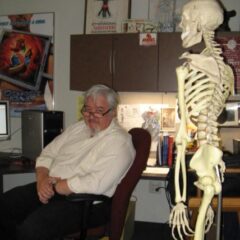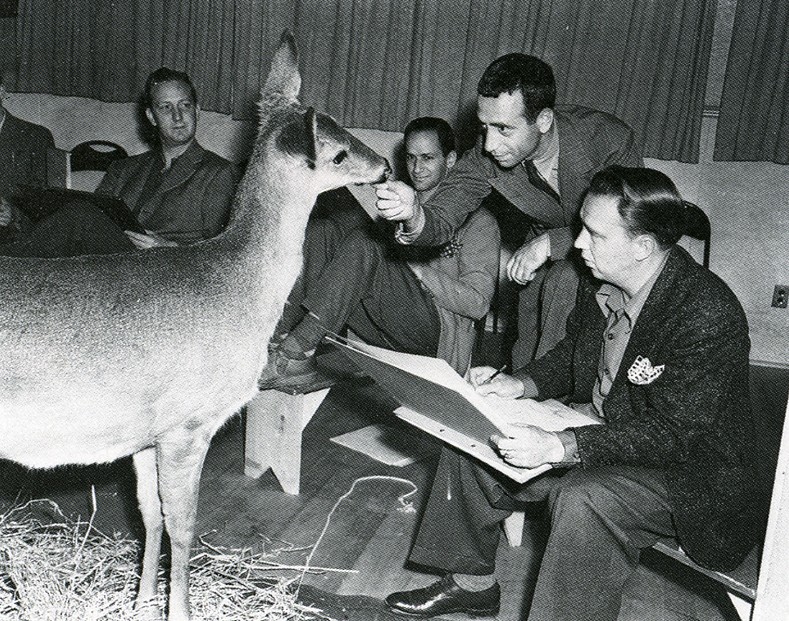|
Getting your Trinity Audio player ready...
|

‘In my 50 years as a professional, of the hundreds of artists I have encountered, only two were Mozarts — gifted from the cradle. All the rest of us had to work hard building and sharpening our skills.’
Lately when reviewing student portfolios for our graduate degree program, I have been struck by the lack of life drawing. During the pandemic, many got out of the habit of coming together to draw from a live model. It seems many schools no longer emphasize it in their programs. I think this is a tragic mistake, since it will affect their students’ development. Too many students buy into the idea that learning animation is mainly about mastering software. “Just show me what button to push.”
In the early 1930s, much of American studio animation had a bland sameness to it. Lots of rubber-hose arms and big eyes. Regardless of the studio, it all looked the same and moved the same. Animators called it “The Racket.” Walt Disney changed this system by hiring teachers like Don Graham to punch up his team’s drawing ability. He knew that if he was ever to create feature films to compete with live action, he needed better quality work out of his artists. He started to pass on old veterans in favor of hiring art students. The other studios followed his example. Walt Disney grabbed the animation industry by the throat and forced it to pay more attention to the quality of drawing.
In my long career, I’ve had my portfolio rejected many times, and I have served on committees that reviewed portfolios. So, I have seen it from both sides. In the beginning, I pooh-poohed serious drawing courses. “Who needs dat stuff? I’m gonna make wacky cartoons!” Despite legendary animators such as Chuck Jones and Frank Thomas telling us that it’s all about the drawing, I dismissed it as not necessary. That got me rejected from jobs with comments like, “I like your ideas, but I wish you drew better.”
The second time I had my portfolio drop-kicked by Disney, I took the advice of a Disney trainee from my hometown named Chuck Harvey and went to the Art Students League of New York. This was a school that focused on nothing else but drawing, painting and sculpture. There I concentrated on classical anatomy and radical anatomy. Instead of drawing lumps that were supposed to be a knee or shoulder blade, I learned how they were shaped and functioned. I learned artistic anatomy well enough to teach it. After two years of that, doors started to open for me. When Dick Williams reviewed my portfolio again, he commented, “I see you did what I suggested.”
After that, the world was my oyster. I not only got more jobs but was asked to rate other portfolios. When I was on the other side of the reviewers table, I could see what Chuck, Frank and Dick were talking about. Many times it’s hard to tell what an artist could do based solely on their personal work, which in many cases had a strong design style. But you are not going to draw your style in my studio. You’re going to have to draw SpongeBob, or Stewie, or Moana. I may not be able to see that potential from your personal work, but I can see it from your life drawing. Drawing from the model. Drawing at the zoo. Action sketches. Drawing hands and anatomical studies. And drawing in person from real life, not online websites.
In my 50 years as a professional, of the hundreds of artists I have encountered, only two were Mozarts — gifted from the cradle. All the rest of us had to work hard building and sharpening our skills. Sure, it’s important to know how the software works. But programs change every few years. Despite all the digital bells and whistles, in the end your ability to work still depends upon your ability to draw. Like Shakespeare to an actor, life drawing is never obsolete, regardless of the latest digital marvel.

It’s fashionable lately to say all the new tools and programs make personal drawing unnecessary. Then why, when the selections are being made, are the ones who draw like Glen Keane or James Baxter still being hired before you? Why set yourself up to fail? If your school does not offer life-drawing labs, agitate for some. Many programs begin with a no-instructor session with just a model. In the 1930s, Disney animator Art Babbitt and Bill Tytla held drawing sessions at their house, passing the hat to pay for the model. That was when Walt got the idea to move them into the studio and make it official.
Richard Williams taught us that in your life as an artist you will encounter a series of walls. You will only go so far with what you know to that point. Then you’ll need to change strategy: take a night class like acting, dance, improv. That will break through that wall. He said the best artists never stop breaking through those walls.
You can do it. It’s not impossible. You just have to put in the time. Take it from this son of a Brooklyn fireman! Good luck and keep drawing.
Tom Sito is a 50-year veteran of animation production. His 37 movie credits include Who Framed Roger Rabbit, Beauty and the Beast, The Lion King, The Prince of Egypt and Osmosis Jones. He is the author of several books and teaches at the University of Southern California.







 Win a Funko X Lilo & Stitch Prize Pack!
Win a Funko X Lilo & Stitch Prize Pack!

